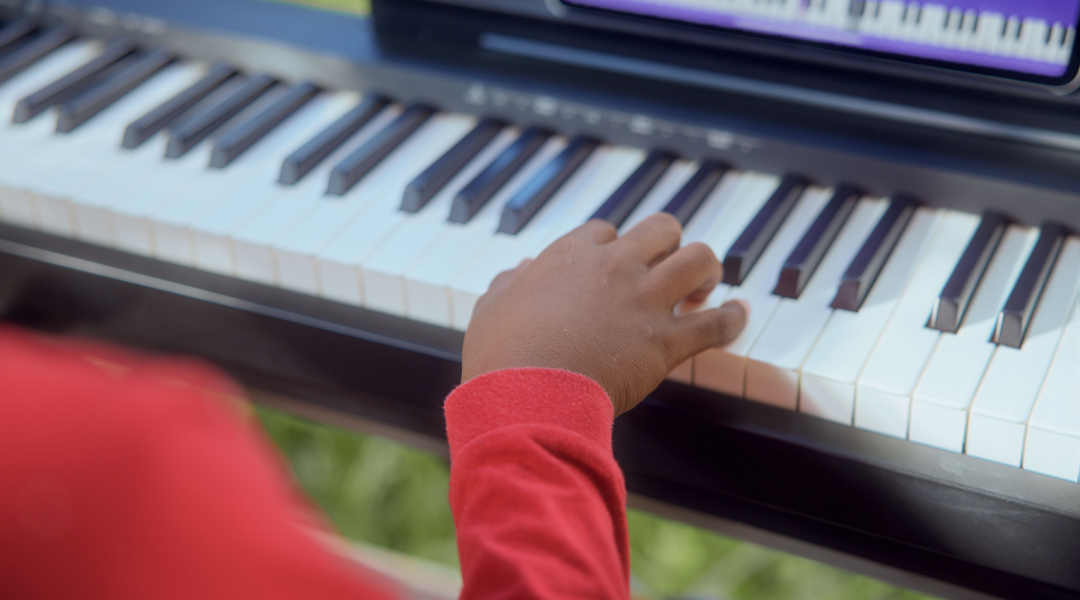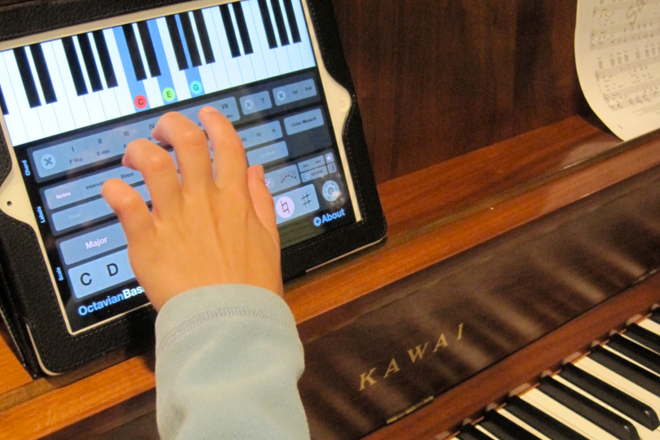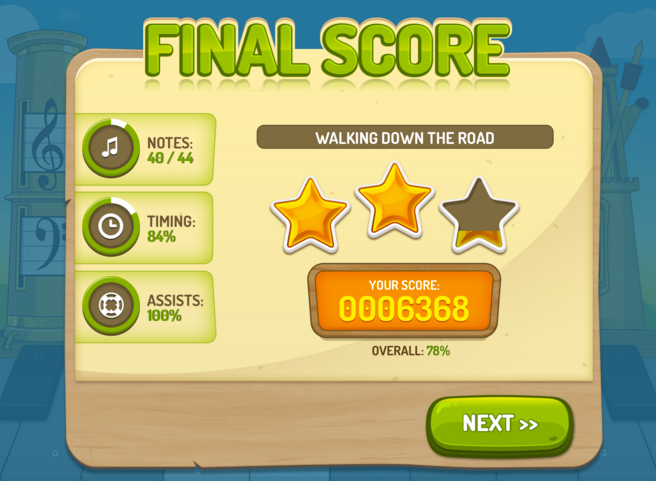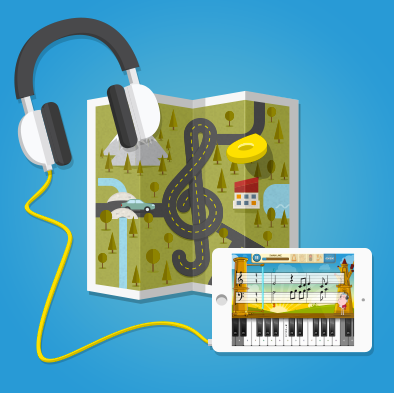Keyboard notes for beginners
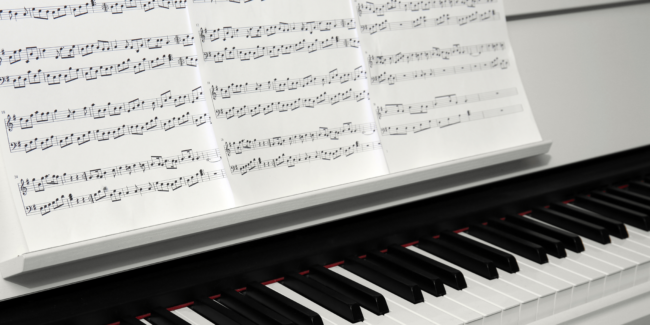
When you first start learning how to play the piano, you may feel overwhelmed by the amount of notes there are to learn. Here’s a quick guide that will help you master the basics.
When you flip through sheet music, all those notes on the page can look a bit intimidating. But, it becomes more doable when you break the music down into its smallest components, notes. Musical notes tell you two important things:
- The location of the note on the keyboard.
- How long you should play the note.
Your keyboard may have a different touch than a piano. The keys may be closer together, and you may have fewer keys. However, the notes and chords will be the same for both keyboards and pianos. This makes it easy to transfer songs from one instrument to the other.
Simply Piano will walk you through playing single notes on your keyboard to make a melody. Then, pretty soon, you can work up to playing a few simple chords. Let’s learn more about introductory keyboard notes for beginners.
What’s a keyboard note?
When you press down the key on the piano or keyboard – BOOM – you have just played a single note.
If you press two or more down simultaneously, you will get some type of chord. Written music gives you directions to find an exact note or chord whenever you want.
To start matching written music with the keys on your keyboard, first, look at your piece of sheet music. You’ll notice that the musical notes are in a nice linear fashion. The pitch gets higher as the notes go up the lines on the staff. And, as the notes go down the lines, the pitch becomes lower.
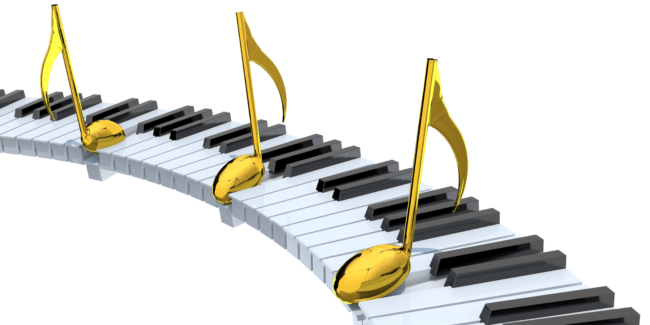
This transfers beautifully to the linear layout of the keyboard. Keyboard notes also get progressively higher as you go up, and the notes sound lower as you go down.
Let’s look more closely at standard keyboard notes and chords for beginners.
Standard keyboard notes
A standard keyboard note is just one note you can play with one finger. You may notice that some notes hang on lines while others sit in the spaces. Some notes are tiny black dots with stems, while others look like circles or ‘O’s.

Where the notes sit on the lines tells you the pitch of your note. And whether your note is a black dot or an ‘O’ tells you the rhythm of your note.
The pitch of a note
The lines and spaces on the grand staff represent the notes on your keyboard. Middle C floats in the middle of the treble clef and bass clef. Going up the treble clef, you will find D, E, F, G, A, B, C, D, E, and the last line on your way up will be F. Going down from middle C. You will find B, A, G, F, and so on.
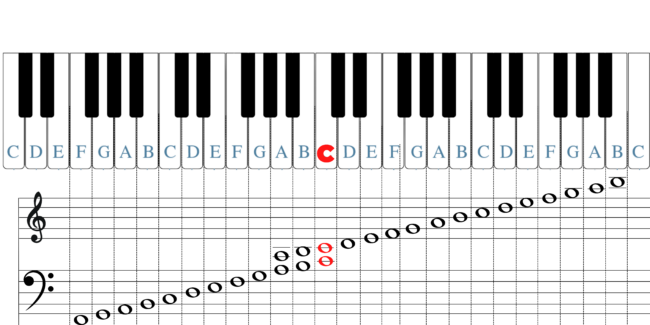
For example, if your note is on the bottom line of the treble clef, you will know to find E on your keyboard. This will be the note under your third finger on your right hand in your five-finger position.
The rhythm
The rhythm works together with the pitch to make a melody. We talk about the rhythm using fractions. The most common time signature for songs is 4/4 time. You can have whole notes, half notes, and quarter notes.
Each measure will have four beats in a 4/4 time signature, and a quarter note will get one beat. A quarter note looks like a black dot on a stem. The following measure has four quarter notes on the note line E. This means you will play E four times.
A half note will look like an ‘O’ on a stem. You hold down a half note for two beats. Since the half note is in the F space on the staff, press the F key on the keyboard and count to two. Then play the following F half note for two beats as well.
A whole note will look like an ‘O’ without a stem and gets four beats. The following whole note tells us to play D and hold it down for four beats.
Try tapping out the following pattern on your lap, paying attention to just the rhythm:
Great job! You just tapped out the first line of Jingle Bells.
What’s a chord?
When you play two or more notes simultaneously, you get a chord. One of the most basic chord structures is a three-note chord called a triad. On a piano or keyboard, a triad has a root note, a 3rd, and a 5th. You can use your thumb, middle finger, and pinky to play this chord.
Minor and major chords are two types of chords. Let’s learn some of the basic facts about these two chord types.
Minor chords
Minor chords are one of the two main types of chords. However, they usually play second fiddle to their major chord counterparts. The main reason minor chords generally get fewer likes than major chords is that they just sound so sad.
Think of Dolly Parton singing Jolene or Ed Sheeran’s song I see Fire. These minor songs kind of tug at your heartstrings.
The Beatles’ song “While My Guitar Gently Weeps” is loaded with minor chords. When even your guitar starts weeping, that’s pretty sad.
To make a minor three-note chord, you take a major chord and leave the root note and fifth in place. Then, lower the middle (third) note by a half-step, and voila! You have a minor chord.
For example, start with an A major chord that uses A, C#, and E. If you take the middle note (C#) and then lower it a half step to C, you get an A minor chord. Try playing this minor chord on the keyboard or piano. A little sad-sounding, right?
While we all like to get out our sad song playlist, that upbeat, feel-good music is hard to beat. Major chords give you the sunshine when you are looking for happy tunes.
Major chords
Most of the songs you hear on the radio and play on the keyboard will use major chords. A basic major chord triad is the first, third, and fifth notes on a major scale. This means that if you want to play a song in C major, the first note of your chord (also called the root note) will be C.
Here is a major C chord in written form:
Place your hand in the five-finger position on the piano with your thumb on the C. Your middle finger will be on E and your pinky on G. Press these three notes down simultaneously, and you have just built a chord.
See? That wasn’t so bad. Pat yourself on the back!
Using those same three fingers, try playing different chords up and down the piano to see how they sound. You can even try playing them in different rhythms to create exciting tunes.
Play those notes. Reach for the stars
Although reading sheet music may look complicated, it’s pretty straightforward once you dive in. And the keyboard is one of the easiest ways for beginners to learn! The linear layout of written music pairs nicely with the linear design of your keyboard.
Once you connect the notes written in your sheet music with the notes on your keyboard, you open the doors to a new world of music.
Simply Piano can make your journey easier by giving real-time feedback as you play keyboard notes.
So, now that you’ve gone over some basics try out some notes on your keyboard!
We’ll mark your progress with stars as you go.






